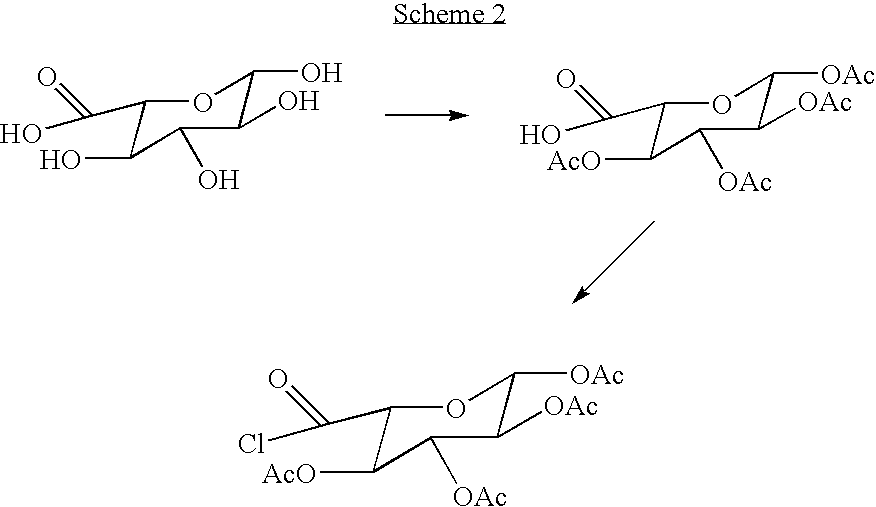Conjugates comprising a central nervous system-active drug linked to glucuronic acid or glucosamine through an amide bond and uses thereof
- Summary
- Abstract
- Description
- Claims
- Application Information
AI Technical Summary
Problems solved by technology
Method used
Image
Examples
Embodiment Construction
CNS-Active Drugs
[0032] CNS-active drugs are biologically active compounds which exert a useful effect on the CNS when administered to an animal. CNS-active drugs include compounds that are effective for the treatment, amelioration or prevention of CNS diseases, disorders or conditions. These diseases, disorders or conditions encompass neurological and psychiatric disorders, including but not limited to, Alzheimer's disease, Parkinson's disease, Huntington's disease, seizures / epilepsy, Tourette Syndrome, attention deficit hyperactivity disorder, headache, migraine, stroke, trigeminal neuralgia, depression, sleep disorders and trauma. Also included are compounds which effect the CNS in desirable ways that are not related to diseases or disorders, e.g., for appetite suppression. Examples of such CNS-active drugs include, but are not limited to, dopamine, valproic acid, GABA, tacrine, phenyloin, carbamazapine, phenobarbital, primidone, clonazapam, felbamate, topiramate, tiagibine, methy...
PUM
| Property | Measurement | Unit |
|---|---|---|
| Composition | aaaaa | aaaaa |
| Pharmaceutically acceptable | aaaaa | aaaaa |
Abstract
Description
Claims
Application Information
 Login to View More
Login to View More - R&D
- Intellectual Property
- Life Sciences
- Materials
- Tech Scout
- Unparalleled Data Quality
- Higher Quality Content
- 60% Fewer Hallucinations
Browse by: Latest US Patents, China's latest patents, Technical Efficacy Thesaurus, Application Domain, Technology Topic, Popular Technical Reports.
© 2025 PatSnap. All rights reserved.Legal|Privacy policy|Modern Slavery Act Transparency Statement|Sitemap|About US| Contact US: help@patsnap.com



